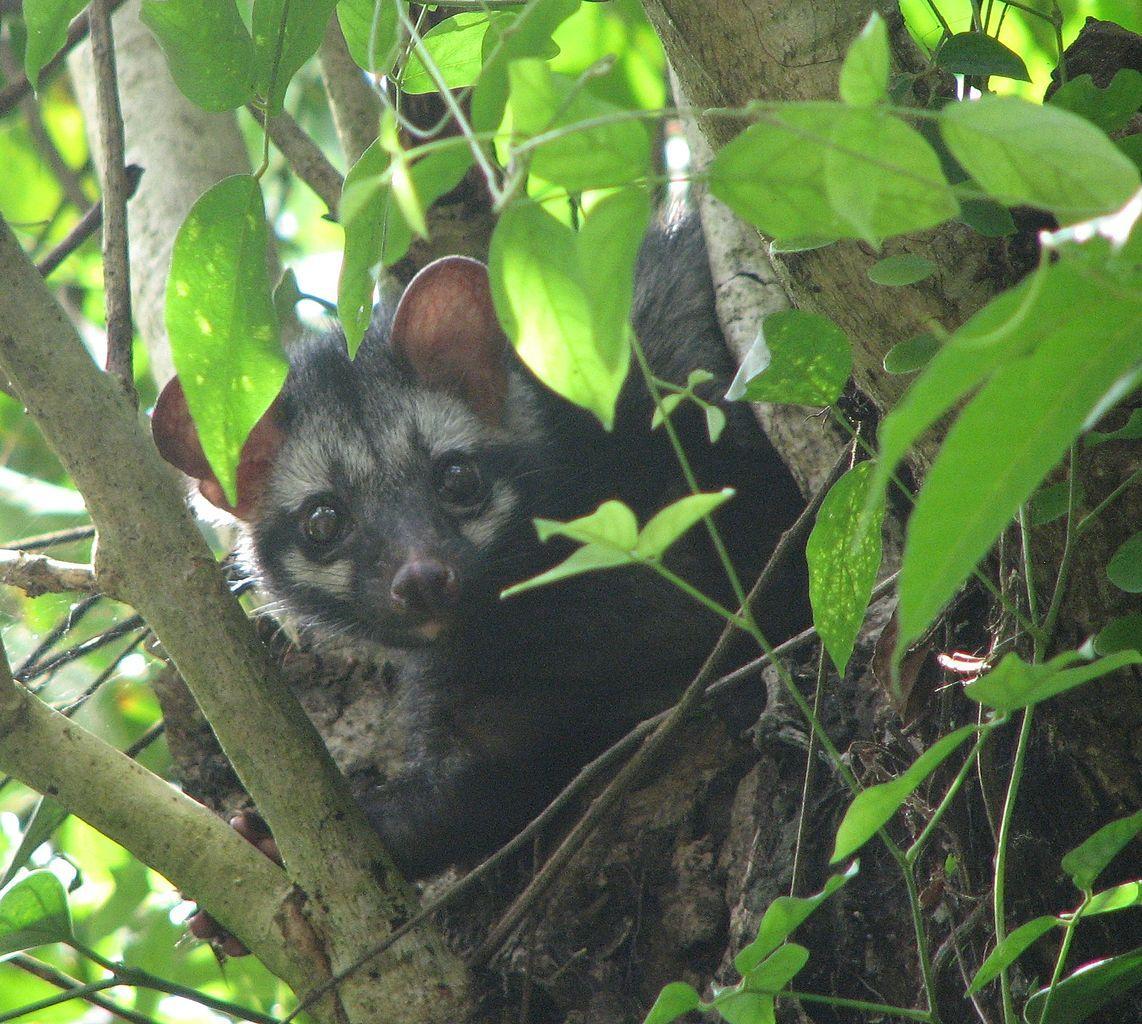
The Alamid or Musang, or Asian palm civet (Paradoxurus hermaphroditus), also called toddy cat, is a small member of the Viverridae family native to South and Southeast Asia. In 2008, the IUCN classified the species as Least Concern as it is tolerant of a broad range of habitats, is widely distributed with large populations that are unlikely to be declining.
Characteristics
The Asian palm civet is a small, mottled gray and black viverrid weighing 2 to 5 kg (4.4 to 11 lb). It has a body length of about 53 cm (21 in) with a 48 cm (19 in) long tail. Its long, stocky body is covered with coarse, shaggy hair that is usually greyish in color. There is a white mask across the forehead, a small white patch under each eye, a white spot on each side of the nostrils, and a narrow dark line between the eyes. The muzzle, ears, lower legs, and distal half of the tail are black, with three rows of black markings on the body. The tail is without rings, unlike in similar civet species. Anal scent glands emit a nauseating secretion as a chemical defense when threatened or upset. Despite its species name hermaphroditus, the civets (like all other mammals) have two distinct sexes and are not hermaphrodites.
Distribution and habitat
Asian palm civets are native to India, Nepal, Bangladesh, Bhutan, Myanmar, Sri Lanka, Thailand, Singapore, Peninsular Malaysia, Sabah, Sarawak, Brunei Darussalam, Laos, Cambodia, Vietnam, China, Philippines and the Indonesian islands of Sumatra, Java, Kalimantan, Bawean and Siberut. They were introduced to Irian Jaya, the Lesser Sunda Islands, Maluku, Sulawesi and Japan. In Papua New Guinea, their presence is uncertain.
They normally inhabit primary forests, but also occur at lower densities in secondary and selectively logged forest.
They also inhabit parks and suburban gardens with mature fruit trees, fig trees and undisturbed vegetation. Their sharp claws allow them to climb trees and house gutters. In most parts of Sri Lanka, palm civets are considered a nuisance since they litter in ceilings and attics of common households, and make loud noises fighting and moving about at night.
Ecology and behaviour
Feeding and diet
The Asian palm civet is an omnivore, utilizing fruits such as berries and pulpy fruits as a major food source, and thus help to maintain tropical forest ecosystems via seed dispersal. They eat chiku, mango, rambutan and coffee, but also small mammals and insects. Ecologically, they fill a similar niche in Asia as Common Raccoons in North America. It also feeds on palm flower sap, which when fermented becomes toddy, a sweet liquor. Because of this habit it is called the toddy cat. It plays a role in the germination of the Pinanga kuhlii and P. zavana palm trees.
Behavior
The Asian palm civet is believed to lead a solitary lifestyle, except for brief periods during mating. It is both terrestrial and arboreal, showing nocturnal activity patterns with peaks between late evening until after midnight. It is usually active between 6:00 pm and 4:00 am, being less active during nights when the moon is brightest.
It performs scent marking using anal glands, urine, and feces. The most common marking behavior is dragging the anal glands on a surface to leave a scent. It is able to identify animal species, sex, and whether the animal that left the scent is known or unknown by smelling an anal scent secretion.
Interactions with humans
Oil extract
The oil extracted from small pieces of the meat kept in linseed oil in a closed earthen pot and regularly sunned is used indigenously as a cure for scabies.
Coffee
Kopi Luwak is coffee prepared using coffee cherries that have been eaten by the animal, partially digested, and harvested from its feces. Kopi Luwak is currently the most expensive coffee in the world.









